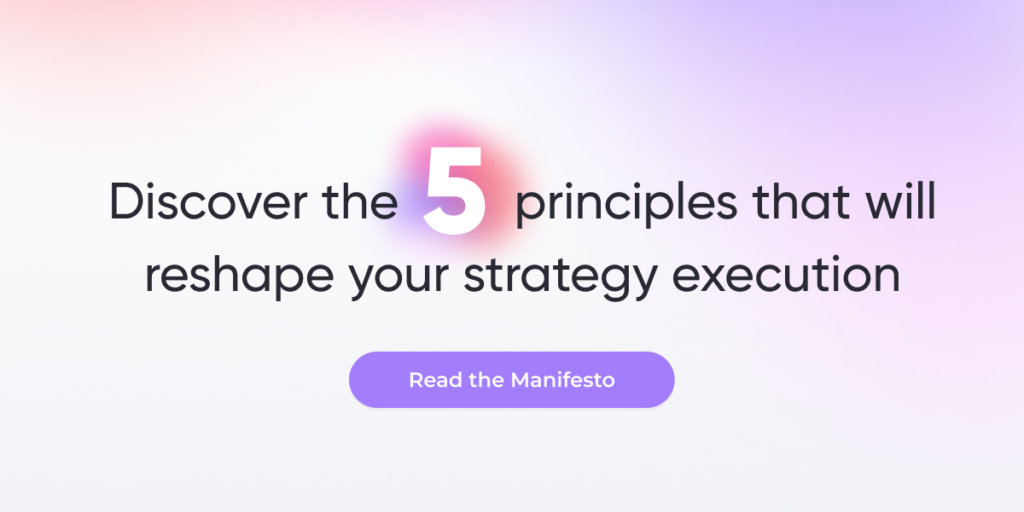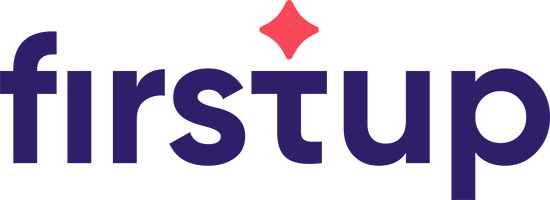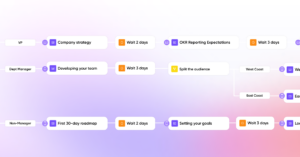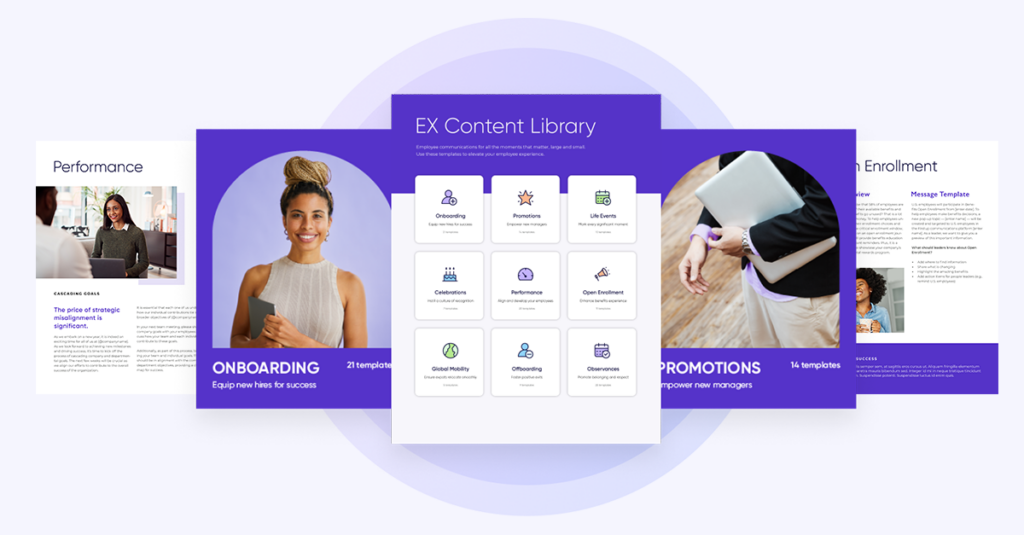From healthcare to retail, employee engagement is more than just sending a weekly newsletter—it requires a two-way conversation between employees and companies, and a desire to redefine the employee experience. This article explores the challenges organizations are facing and how leading companies are supporting their workforce in today’s evolving world of work.
Key Takeaways
- Happy employees are more engaged, loyal, and likely to deliver better customer service—driving meaningful business outcomes and competitive advantage.
- Setting the stage for success requires honest assessment, cross-functional alignment, and strategic workforce orchestration before implementing happiness initiatives.
- Allowing employees to have a voice through open communication, decision-making involvement, and regular feedback creates trust and fuels workplace satisfaction.
- Mental health support and work-life balance aren’t optional—they’re essential business priorities that reduce turnover and boost employee retention.
- Recognition, autonomy, and social connection work together to create a positive work culture where employees feel valued and motivated to stay and grow.
- Smart tools like Firstup help organizations measure sentiment in real-time, respond quickly to employee needs, and increase employee happiness at scale through personalized communication.
Authentic employee engagement has never been more important
In 2024, Gallup reported that just 23% of employees are engaged at work, while 51% are actively or passively job hunting. The stakes are high: communication isn’t just a nice-to-have, it’s a strategic imperative. How well organizations connect with employees impacts not only how people perform at work—but how they feel about their lives as a whole.

We spend over a third of our lives at work. When that experience feels disconnected or unfulfilling, the effects ripple out. Many employees today report feeling overworked, undervalued, and disengaged. Organizations are increasingly recognizing the need to shift their approach away from top-down messaging and toward personalized, people-first engagement strategies.
So how are leading companies closing the gap between what employees expect and what they experience? Below, we explore fifteen powerful strategies in action from organizations that are elevating employee happiness—and unlocking better business outcomes in the process.
Why Happy Employees are Good for Business

Happy employees aren’t just nice to have. They’re a strategic asset. When people feel valued, supported, and connected to their work, they perform better, stay longer, and elevate those around them. Organizations that prioritize employee happiness are not only creating a positive culture; they are gaining a true competitive advantage.
The productivity payoff
According to a 2023 McKinsey Health Institute report, organizations that invest in employee well-being can see productivity gains of up to 21%. When individuals feel good about where they work, they’re more likely to go the extra mile, solve problems creatively, and collaborate more effectively. Happiness at work fuels higher performance—and drives meaningful business outcomes
Engaged employees drive innovation
Employee happiness fuels engagement. In turn, engagement drives innovation. When people feel safe, included, and energized, they’re more likely to contribute new ideas and challenge the status quo. This kind of culture leads to faster and better outcomes.
Better experiences create better service
There’s a clear link between employee happiness and customer satisfaction. Employees who enjoy their work are more empathetic, responsive, and committed to delivering excellent service. This frontline positivity becomes a brand advantage, increasing loyalty, referrals, and long-term retention.
Loyalty that lasts
Happy employees are more likely to stay with their company. And that matters. Turnover is expensive, not only in terms of cost, but also in lost knowledge and culture. By investing in happiness, companies can reduce churn, strengthen team continuity, and protect institutional memory.
Culture is the engine of business success
Happiness isn’t a fringe benefit. It is a clear indicator of how well your organization supports, empowers, and listens to its people. A culture where employees feel heard and valued not only retains top talent but also attracts it. When this sense of momentum is guided with intention, it creates the foundation for meaningful transformation across the business.
When employees thrive, organizations thrive with them. Happiness is more than a sentiment. It is a catalyst for success.

Setting the Stage for Success
Assess your starting point honestly
Before implementing happiness initiatives, organizations need to understand their current state. This means identifying existing pain points, communication gaps, and cultural barriers that might prevent success.
Align cross-functional teams around shared goals
Employee happiness isn’t just HR’s responsibility—it requires coordination across IT, Operations, Communications, and Leadership. Successful organizations create cross-functional teams with clear roles and shared accountability.
Orchestrate your workforce connections strategically
Connecting the workforce is what it’s all about—bringing people together to accomplish something important and impactful. This means creating systems and processes that enable seamless communication, collaboration, and connection across all employee groups, regardless of location or role.
Start with quick wins while building long-term capacity
Balance immediate improvements that employees can see and feel with longer-term investments in systems, training, and culture change. This dual approach maintains momentum while building sustainable change.
Culture and values in action
15 ways to keep employees happy
1. Recognize and reward employees often
Consistent recognition makes employees feel appreciated and motivated. Acknowledging individual and team accomplishments—both big and small—boosts morale and helps reinforce company values. Public praise, small perks, and tailored rewards all contribute to a more engaged workforce.
2. Encourage open communication and employee feedback
Two-way communication is essential. Employees want to share their ideas, ask questions, and express concerns. Regular feedback loops, town halls, and digital platforms give employees a voice and show that their input shapes decisions.
Dow, a Fortune 100 materials science company with more than 35,000 employees in over 100 countries, realized that 60% of its global workforce—especially those on the plant floor—lacked access to corporate email or intranet. To bridge the gap, Dow launched a mobile app that delivered timely updates and enabled direct feedback. The result: faster communication, increased transparency, and a stronger sense of connection across locations.
Penske Australia and New Zealand, a global transportation company with thousands of employees across the region, recognized the need for more inclusive communication. By implementing a modern communication platform, they ensured every employee—regardless of role or location—felt informed, valued, and connected. The platform helped unify teams and boost employee trust through more equitable access to HR and safety updates.
3. Support a positive work environment
Culture matters. A workplace where employees feel safe, respected, and included is one where happiness thrives. From inclusive policies to team-building activities and conflict resolution support, creating a supportive environment directly improves employee satisfaction.
4. Promote work-life balance
Overwork leads to burnout. Flexible scheduling, clear workload expectations, and respect for personal time help employees recharge and maintain their well-being. When employees feel trusted to manage their time, they are more focused and productive—resulting in stronger performance and improved business outcomes.
Global energy company Phillips 66, with operations across the U.S. and Europe, recognized the toll of digital overload and used AI to time internal communications for maximum engagement. By reducing email fatigue and delivering messages when employees were most receptive, they protected downtime and preserved boundaries—demonstrating respect for flexible working hours.
Vodafone, one of the world’s largest telecommunications providers, consolidated internal messages into a curated mobile app, giving employees control over when and how they engaged. This shift not only boosted employee satisfaction but also fostered a more positive work environment rooted in autonomy and trust.
5. Offer competitive compensation and benefits
A fair and attractive pay package matters. Competitive compensation shows employees they are valued. Pairing it with meaningful benefits—healthcare, paid time off, parental leave, wellness programs—builds trust and loyalty.
6. Provide opportunities for growth and development
Career development is a key driver of employee happiness. When employees feel they can learn new skills, advance in their role, or pursue new paths, they are more likely to stay. Offer training, mentoring, and clear progression plans to unlock potential.
7. Foster a sense of purpose and connection
Employees want to feel connected to their team and aligned with company values. Share company goals, celebrate progress, and encourage cross-functional collaboration. When employees feel part of something bigger, their motivation and loyalty grow.
8. Make space for mental health and well-being
A strong well-being strategy is essential. Overlooking mental health puts both productivity and retention at risk—especially in demanding industries. Organizations that prioritize emotional, physical, and mental wellness create a more positive work environment and a positive culture where employees feel valued beyond their job descriptions.
Hawai‘i Pacific Health, a nonprofit healthcare system supporting more than 7,000 employees across the Pacific region, recognized early the impact of burnout—an issue affecting nearly 50% of professionals reporting symptoms as of 2023. To boost employee happiness and reassure employees during times of heightened anxiety, HPH used mobile communication tools to deliver mindfulness sessions, wellness content, and a podcast amplifying frontline voices. The initiative helped create a culture of care, transparency, and inclusion.
Similarly, Brightview Senior Living, a company focused on assisted living and memory care, launched “BVLink” to deliver wellness-focused updates to frontline caregivers. This proactive communication approach helped reduce stress and preserve overall happiness, reinforcing a workplace where employee feedback was heard and mental health support was visible and accessible.
“There was just such a desperate need for information because the anxiety level was so high……This really helped us communicate with our folks quickly.”
– Raquel Hicks, Director of Organizational Effectiveness
By offering tools such as mental health days, counseling access, and space for open dialogue, companies reinforce that their people come first. These practices don’t just reduce stress—they build trust, loyalty, and a workplace happiness culture that drives long-term business success.
9. Create a culture of appreciation
Gratitude strengthens relationships, reinforces a positive work culture, and directly boosts employee happiness. Encouraging employees to express thanks regularly—whether through formal recognition programs or spontaneous shout-outs—helps build a work environment where people feel valued, seen, and motivated.
At the American Cancer Society, a nationwide nonprofit with many employees spread across various locations, leadership launched real-time communication tools that allowed teams to access urgent updates and express appreciation swiftly. This initiative empowered employees to better support patients while fostering a stronger sense of connection and loyalty among staff.
PVH Corp., a global fashion and apparel company, introduced the PVH Insider mobile app to connect retail associates and strengthen company culture. By enabling employees to easily share content and celebrate one another’s achievements, PVH created a more inclusive and appreciative workplace—an important driver of workplace happiness and overall engagement.
When appreciation becomes a habit, it encourages employees, supports employee loyalty, and contributes to the company’s success. Happiness leads to better outcomes—for individuals, teams, and the organization as a whole.
10. Involve employees in decisions that affect them
Employees are more engaged when they have a say in how things work. Allowing employees to provide input on policies, workflows, tools, or cultural initiatives builds trust and leads to better decisions that reflect the real needs of the workforce, and raising employee satisfaction levels.
11. Show leadership transparency and authenticity
Honest, transparent leadership builds trust and psychological safety. When leaders communicate openly about company direction, admit mistakes, and share challenges, employees feel more secure and respected. Authentic leadership creates an environment where employees can be genuine too.
12. Make employee wellness a business priority
Well-being should be central to business strategy, not an afterthought. Include wellness goals in planning, allocate resources for health initiatives, and align managers around supporting a healthy workforce. When wellness is a core business objective, employees see their health genuinely matters.
13. Encourage social connection and community
Strong workplace relationships are a cornerstone of employee happiness. When employees feel genuinely connected to their colleagues, they’re more likely to stay, collaborate effectively, and contribute to a more positive work environment. Social connection doesn’t just boost morale—it increases employee happiness and can lead to improved customer satisfaction and retention.
Newell Brands, a global consumer goods company with thousands of deskless employees in factories and warehouses, launched the Newell Now app to bridge communication gaps. By providing a personalized communication experience, the company fostered a greater sense of belonging, especially for employees traditionally left out of internal conversations.
At Boston Children’s Hospital, one of the nation’s top pediatric medical centers, leadership created Scope 360, a platform that encourages employees to share their personal stories in their own voices. This initiative deepened the connection between staff and their work, boosted company culture, and showcased the emotional strength of their community—fueling workplace happiness and long-term employee loyalty.
In today’s distributed and hybrid workplaces, building authentic community requires intention. But the payoff is powerful: a thriving culture where employees support each other, unhappy employees feel seen and heard, and the organization unlocks new levels of engagement and growth opportunities.
14. Empower employees with autonomy
Trust is a powerful motivator. Give employees freedom to make decisions, manage their schedules, and explore creative solutions. When people feel trusted without micromanagement, they become more confident and engaged. Autonomy shows respect for their expertise and judgment.
15. Keep listening and evolving
Employee happiness requires ongoing attention. Regularly gather feedback through surveys, conversations, and pulse checks. This consistent listening helps organizations understand what’s working, what’s not, and where to evolve next. When employees feel heard and see their input drive real change, they are more likely to stay engaged and loyal.
Bounteous, a global digital consulting firm, recognized the need to strengthen internal alignment following multiple acquisitions. They launched The Well, a platform designed to unify company culture and spotlight employee storytelling. This initiative gave employees a voice, helped surface previously overlooked concerns, and significantly boosted employee happiness by reinforcing a sense of belonging.
Evergy, a major utility provider serving over 1.6 million customers across Kansas and Missouri, faced communication barriers with its field employees during a merger. Traditional methods like e-newsletters weren’t cutting it. By shifting to a mobile-first platform, Evergy created more transparency and connection—especially with frontline teams—helping to reduce disengagement and prevent unhappy employees from becoming unhappy workers.
By continuously evolving in response to employee feedback, companies not only increase employee happiness—they also build a stronger company culture, improve customer satisfaction, and uncover growth opportunities that support long-term business success.

Measuring employee happiness
Now that we’ve explored how to keep employees happy, the next step is understanding how to measure it. Understanding how employees feel about their work, their teams, and their organization is critical to building a happier, more productive workforce. Measuring employee happiness isn’t about one-off surveys—it’s about ongoing insight and action. Here are some of the most effective ways to gather meaningful feedback and track well-being across your organization.
Employee satisfaction surveys
Standardized surveys offer a broad snapshot of how employees feel about key aspects of their experience, from workload to leadership. When run regularly, they reveal trends over time and help pinpoint where improvements are needed most.
Employee Net Promoter Score (eNPS)
This simple yet powerful metric asks employees how likely they are to recommend their workplace to others. It’s a clear indicator of loyalty and sentiment, and can serve as a leading signal of retention risks or cultural shifts.
Regular one-on-one check-ins
Frequent, informal conversations between managers and employees help uncover concerns that don’t always surface in surveys. These check-ins build trust and allow for real-time course correction, making them one of the most effective listening tools.
Providing support and resources
Tracking the use and effectiveness of well-being tools, training programs, or internal platforms gives insight into whether employees feel supported. Low usage may signal a lack of awareness, trust, or relevance—each of which deserves attention.
Pulse surveys
Short, frequent surveys help monitor how employees feel in the moment. They’re ideal for tracking reactions to changes, new programs, or shifting business conditions, and offer quick data points to guide fast, responsive decisions.
Employee sentiment analysis
Analyzing anonymous comments, chat messages, or open-ended survey responses using natural language processing can help identify themes and emotional trends. This approach offers deeper insight into employee perceptions across large populations.
Exit and stay interviews
While exit interviews help uncover why people leave, stay interviews reveal what keeps people committed. Both can surface hidden pain points or highlight what’s working well—and both are key to creating a culture where employees feel heard.
Using intelligent communication platforms
Platforms like Firstup bring an entirely new layer of measurement by capturing real-time engagement data across multiple channels. By delivering targeted, personalized communications and analyzing how employees interact with content, organizations gain deeper visibility into sentiment, interest, and areas of concern. These insights enable more responsive action and make happiness a continuous, measurable part of the employee experience.
Putting people first
Creating happy employees takes more than a one-off initiative. It requires consistent effort to communicate clearly, support well-being, and give employees a voice. When people feel valued, connected, and empowered to contribute, the results show up in stronger performance, deeper loyalty, and better customer experiences. A culture of happiness isn’t just good for employees—it’s good for business.
Download PDF









